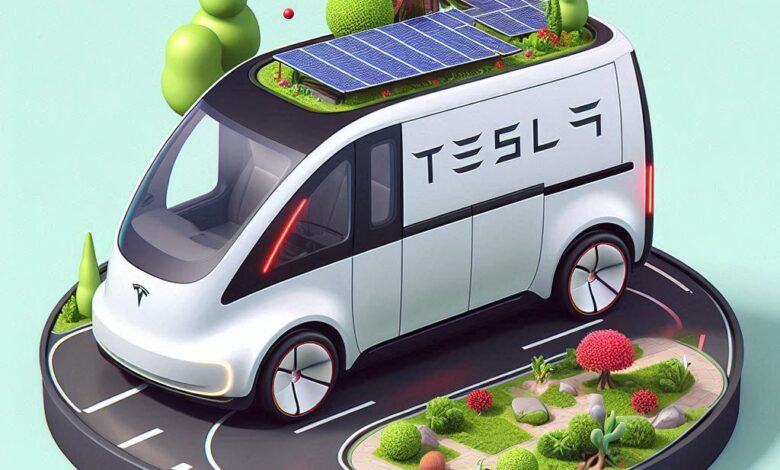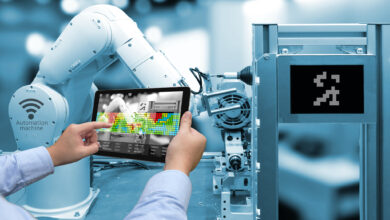
Elon Musk Unveils Tesla Robovan: The Future of Self-Driving Robotaxi
The Tesla Robovan is a groundbreaking innovation that epitomizes Tesla’s commitment to revolutionizing transportation. As a state-of-the-art vehicle designed to operate autonomously, it promises to change the way we think about both personal and commercial transport.
CEO Elon Musk unveiled this long-awaited robotaxi during a recent event, showcasing its advanced features and the potential to carry up to 20 passengers or transport goods. The Robovan stands at the intersection of technology(keep in touch), sustainability, and convenience, paving the way for a new era of electric vehicles.
The Concept: Tesla’s Vision for the Robovan
Elon Musk’s vision for the Tesla Robovan extends beyond mere utility; it embodies a comprehensive approach to urban transport. The concept is rooted in the idea of creating a fully autonomous vehicle that can seamlessly integrate into daily life. Musk said that the Robovan is designed for both personal transport and to act as a commercial robotaxi service.
The innovative design includes seats that face each other, allowing for a social travel experience, whether for work or leisure. This approach showcases Tesla’s commitment to enhancing the customer experience while addressing the growing demand for flexible transport solutions.
A Glimpse Into the Future of Electric Vans
The Tesla Robovan provides a window into the future of electric vans, emphasizing efficiency and sustainability. With advancements in battery technology and the integration of full self-driving (FSD) capabilities, the Robovan is poised to redefine how we perceive urban mobility.
The vehicle’s potential to operate unsupervised aligns with global trends toward automation and smart cities. As we look forward to 2024 and beyond, it’s clear that the Robovan could serve as a cornerstone for future electric vehicle fleets, particularly in urban settings where congestion and pollution are pressing concerns.
How the Tesla Robovan Fits into Tesla’s Product Line
The Tesla Robovan complements the existing product line, which includes the popular Model 3 and Model Y, by broadening the scope of Tesla’s offerings. This new electric vehicle is part of Musk’s broader vision to create a suite of self-driving vehicles that cater to varying consumer needs.
With the introduction of the Robovan, Tesla aims to fill the gap in the market for larger electric transport options, targeting families and businesses alike. The Robovan’s design, inspired by the principles of sustainability, aligns perfectly with Tesla’s ethos of creating innovative solutions for a better future.
1. Key Features and Specifications of the Tesla Robovan
Full-Self Driving (FSD) Capabilities: How Autonomous is the Robovan?
The Tesla Robovan boasts cutting-edge full self-driving (FSD) capabilities, with the ability to navigate complex environments without human intervention. This level of autonomy is a game-changer for the future of transport, allowing users to relax and enjoy the ride.
The Robovan is also equipped with advanced sensors and AI, which enable it to make real-time decisions based on its surroundings. This ensures a safe travel experience, whether it’s carrying passengers or transporting goods. Musk also emphasized the importance of unsupervised full self-driving technology, which can drastically reduce operational costs for businesses.
Power and Range: Electric Efficiency for Long Distances
With regard to power and range, the Tesla Robovan is engineered for efficiency, allowing for long-distance travel without the frequent need for recharging.
The advanced battery technology that Tesla is known for ensures that the Robovan can cover significant distances on a single charge, catering to both urban and rural transport needs. This electric vehicle not only minimizes the environmental footprint but also offers performance that rivals traditional gasoline-powered vans. The seamless integration of solar energy solutions enhances its practicality, ensuring that the Robovan remains a sustainable option for businesses and consumers alike.
Cargo and Passenger Flexibility: A Multi-Purpose Design
The Robovan’s design is remarkably versatile, allowing for both cargo and passenger transport. It can carry up to 20 people, making it an ideal solution for group travel or shuttle services. Additionally, the interior can be easily reconfigured to accommodate various loads, whether it’s passengers or freight.
This multi-purpose capability positions the Robovan as a leading choice for businesses seeking a flexible transport solution. The balance of passenger comfort and cargo efficiency meets the demands of a changing market, where both personal and commercial transport needs are evolving.
2. The Technology Behind the Tesla Robovan
The Battery Technology: Tesla’s Advanced Powertrain
At the heart of the Tesla Robovan lies its advanced battery technology, which is a hallmark of Tesla’s engineering prowess. The powertrain is designed to maximize efficiency and performance, ensuring that the Robovan can operate effectively for extended periods.
By utilizing cutting-edge lithium-ion batteries, Tesla can offer a vehicle that not only performs well but also has a significantly reduced carbon footprint. This technology is pivotal in achieving the sustainability goals that Musk has set for the company. The Robovan’s powertrain will likely serve as a model for future electric vehicles, emphasizing the importance of energy efficiency in modern transport.
AI and Sensors: The Autonomous Navigation System
The autonomous navigation system of the Tesla Robovan is powered by sophisticated AI and sensor technology, enabling it to understand and interpret its surroundings. This system allows for seamless navigation through complex urban environments, making real-time adjustments to its route and speed.
The sensors continuously gather data, which feeds into the AI algorithms, ensuring that the Robovan can react to obstacles and varying traffic conditions effectively. Additionally, this technology plays a crucial role in enhancing the safety of the vehicle, as it can predict and prevent potential hazards long before they arise. This integration of AI and sensors positions the Robovan as a leader in the autonomous vehicle market.
Energy Efficiency: Solar Integration and Sustainability Features
In its pursuit of sustainability, the Tesla Robovan features innovative energy efficiency measures, including solar integration. This technology allows the vehicle to harness solar energy, reducing its reliance on external charging sources. By capturing sunlight, the Robovan can extend its range and offer a more sustainable transport solution.
Additionally, the vehicle includes features designed to minimize energy consumption, such as regenerative braking and lightweight materials. These advancements not only contribute to the overall efficiency of the Robovan but also align with Tesla’s mission to create eco-friendly vehicles that combat climate change. The Robovan is a testament to how technology can facilitate sustainable transportation.
3. Benefits of the Tesla Robovan for Businesses
Revolutionizing Delivery Fleets: Cost Savings and Efficiency
The Tesla Robovan is set to revolutionize delivery fleets, offering businesses significant cost savings and improved efficiency. By utilizing electric power and autonomous capabilities, companies can reduce operational costs associated with traditional fuel and labor.
The Robovan’s capacity to operate without a driver opens up new possibilities for logistics, allowing for 24/7 operations without the need for rest breaks. Additionally, the vehicle’s advanced navigation system ensures timely deliveries, enhancing customer satisfaction. As businesses adapt to the demands of the modern economy, the Robovan emerges as a powerful tool for innovation in the delivery sector.
Sustainable Transportation: The Environmental Impact
One of the key benefits of the Tesla Robovan lies in its potential for sustainable transportation. By operating as a fully electric vehicle, it significantly reduces carbon emissions compared to traditional gas-powered vans.
This aligns with global efforts to combat climate change and promotes a shift towards greener transport solutions. Furthermore, the Robovan’s design incorporates sustainable materials, which further enhances its environmental credentials. Businesses that adopt the Robovan not only contribute to sustainability but also appeal to eco-conscious consumers, creating a positive brand image in an increasingly environmentally aware market.
Adapting for Urban and Long-Distance Transportation Needs
The versatility of the Tesla Robovan makes it an ideal solution for both urban and long-distance transportation needs. In urban environments, its compact design and autonomous features facilitate easier navigation and reduce traffic congestion. Conversely, its extended range and efficiency make it suitable for longer journeys, catering to a wide spectrum of transport requirements.
Businesses can leverage this adaptability to optimize their logistics, ensuring that they can meet customer demands regardless of distance. As cities evolve into smart urban environments, the Robovan stands ready to adapt and integrate seamlessly into these futuristic landscapes.
4. Safety Features of the Tesla Robovan
Autonomous Safety: Tesla’s Full-Self Driving Crash Prevention Systems
The safety features of the Tesla Robovan are paramount, particularly its full self-driving (FSD) crash prevention systems. By integrating advanced sensor technology and AI, the Robovan can detect potential hazards and react accordingly to avoid collisions.
This level of autonomous safety is a significant advancement in the realm of transportation. The Robovan is designed to prioritize passenger safety, making it a reliable option for both personal and commercial use. Tesla’s commitment to continuous improvement means that these systems will evolve over time, incorporating real-world data for enhanced safety measures.
Emergency Handling: What Happens When Things Go Wrong
In the event of an emergency, the Tesla Robovan is equipped with sophisticated handling systems designed to ensure passenger safety. The vehicle is programmed to execute predefined protocols, which may include safely pulling over, alerting emergency services, and providing real-time updates to passengers. This proactive approach to emergency situations enhances the overall trust in autonomous vehicles, as passengers can feel secure knowing that the Robovan is prepared for unexpected events.
Tesla’s commitment to rigorous testing and data analysis ensures that these emergency systems are continuously refined, making them more effective over time.
Real-World Testing and Data-Driven Updates for Safety
Real-world testing is a cornerstone of Tesla’s approach to safety in the Robovan. Continuous data collection from the vehicle’s operations informs updates and improvements to the FSD capabilities. This data-driven approach allows Tesla to identify potential safety issues and implement solutions swiftly.
As the company gathers insights from various environments, the Robovan becomes more adept at handling diverse driving conditions. This commitment to real-world testing not only enhances the safety features of the Robovan but also fosters public trust in autonomous vehicles as a whole, paving the way for broader acceptance of this technology.
5. Tesla Robovan’s Role in the Future of Logistics and Transport
Disrupting Commercial and Cargo Industries
The Tesla Robovan is poised to disrupt the commercial and cargo industries, offering a new paradigm in logistics. By combining electric power with autonomous capabilities, it provides a cost-effective alternative to conventional vehicles.
This disruption will likely result in a shift in how goods and services are transported, particularly in urban areas where efficiency and sustainability are increasingly important. Businesses that adopt the Robovan can expect significant improvements in their operational efficiency, allowing them to meet the demands of a modern economy that values speed and environmental responsibility.
Tesla Robovan in Smart Cities: Integration with Urban Infrastructure
As cities evolve into smart environments, the Tesla Robovan is well-positioned to integrate with urban infrastructure. Its autonomous capabilities will allow it to navigate intelligently within urban systems, reducing congestion and optimizing routes. This integration will facilitate a more streamlined public transport experience and could even support interconnectivity with existing transportation networks.
Moreover, as municipal governments focus on sustainability, the Robovan’s electric foundation aligns perfectly with initiatives aimed at reducing urban pollution. This synergy between the Robovan and smart city infrastructure will foster a future where transportation is efficient, eco-friendly, and seamlessly integrated into daily life.
Scaling the Service: Global Adoption and Tesla’s Vision for Logistics
Scaling the service of the Tesla Robovan is central to Musk’s vision for the future of logistics. By promoting global adoption, Tesla aims to create a network of autonomous transport solutions that can serve various markets. This vision entails not only enhancing the efficiency of goods transport but also addressing consumer needs in diverse geographical regions. As more businesses recognize the advantages of electric and autonomous transport, the Robovan could become a staple in logistics, reshaping the industry landscape.
The potential for widespread use of the Robovan underscores Tesla’s commitment to innovation and sustainability, driving forward a new era in transportation.
6. Comparing Tesla Robovan to Other Autonomous Vans
Tesla Robovan vs Rivian’s Electric Van: Key Differences
When comparing the Tesla Robovan to Rivian’s electric van, several key differences emerge. While both vehicles are designed for electric transport, the Robovan sets itself apart with its advanced full self-driving (FSD) capabilities. Musk said that the Robovan’s technology is more integrated and designed for unsupervised operation, which can significantly enhance its operational efficiency.
Additionally, the Robovan’s capacity to carry up to 20 passengers or large cargo sets it apart from Rivian’s offerings, which are typically more suited for personal use. These distinctions highlight Tesla’s focus on creating versatile and scalable solutions in the electric van market.
How the Robovan Stacks Up Against Mercedes Electric Vans
When examining how the Tesla Robovan stacks up against Mercedes’ electric vans, it becomes clear that Tesla is leading in autonomous technology. The Robovan’s full self-driving capabilities provide a level of innovation that Mercedes has not yet fully matched. Furthermore, the Robovan’s design prioritizes passenger and cargo flexibility, catering to a broader range of consumer needs.
Tesla’s focus on sustainability through electric power and advanced battery technology also positions the Robovan favorably in the market. As consumers increasingly seek environmentally friendly transportation options, the Robovan emerges as a frontrunner in the race for electric vans.
7. The Environmental Impact of the Tesla Robovan
Reducing Carbon Emissions: How Tesla Robovan Helps the Planet
The Tesla Robovan plays a crucial role in reducing carbon emissions, aligning with global initiatives aimed at combating climate change. As an all-electric vehicle, it operates without the harmful emissions associated with traditional gasoline-powered vans. By promoting the use of electric transport, the Robovan contributes to cleaner air and a healthier environment.
Furthermore, its efficient design maximizes energy usage, minimizing waste and enhancing sustainability. As more businesses adopt the Robovan, the cumulative impact on carbon reduction could be substantial, making a significant contribution to a more sustainable future.
Sustainable Materials and Design Innovations
In addition to its electric powertrain, the Tesla Robovan incorporates sustainable materials and design innovations that further enhance its environmental impact. Through the use of recycled and eco-friendly materials in its construction, Tesla aims to minimize its ecological footprint. The design of the Robovan also prioritizes energy efficiency, ensuring that every aspect of the vehicle contributes to sustainability.
These innovations reflect Tesla’s commitment to not only creating advanced electric vehicles but also promoting responsible consumption and production practices. The Robovan serves as a model for how modern vehicles can be built with sustainability at the forefront.
How the Robovan Fits into Tesla’s Larger Green Energy Vision
The Tesla Robovan is a key component of the company’s larger green energy vision, which seeks to transition the world to sustainable energy solutions. By offering an all-electric vehicle with advanced technology, Tesla is leading the charge in redefining transportation norms.
The Robovan’s design and functionality align with Tesla’s goals to reduce reliance on fossil fuels and promote clean energy usage in transportation. As the world increasingly shifts towards sustainability, the Robovan stands as a symbol of Tesla’s commitment to creating a greener future, proving that innovation and environmental responsibility can go hand in hand.
8. Market Availability and Pricing
Expected Release Dates: When and Where the Tesla Robovan Will Be Available
The Tesla Robovan is highly anticipated, with expected release dates set for 2024 in key markets like Texas and California. This launch will mark a significant milestone for Tesla as it expands its product lineup to include this innovative vehicle. As production ramps up, the company aims to meet the growing demand for electric and autonomous transport solutions.
By making the Robovan available in major urban centers first, Tesla can effectively showcase its capabilities and gather valuable consumer feedback. This strategic approach will ensure that the Robovan is well-received upon its entry into the market.
Early Adopters: Who Will Benefit First?
Early adopters of the Tesla Robovan will likely include businesses in the logistics and transportation sectors. Companies that prioritize sustainability and efficiency will benefit significantly from the Robovan’s capabilities. Additionally, urban transportation services, including ride-sharing and shuttle services, may quickly integrate the Robovan into their fleets.
These early adopters will not only have the advantage of leveraging cutting-edge technology but will also align themselves with consumer trends favoring eco-friendly transportation. By being among the first to utilize the Robovan, these businesses can enhance their operational efficiency and bolster their reputation as leaders in sustainable transport.
9. Challenges Tesla Robovan Might Face
Regulatory Hurdles: Government Approvals and Autonomous Driving Laws
The Tesla Robovan may face various regulatory hurdles as it seeks government approvals for its autonomous driving capabilities. Navigating the complex landscape of autonomous vehicle legislation is critical for Tesla’s success. Different regions have varying laws and regulations regarding self-driving technology, which can complicate the rollout of the Robovan.
Additionally, public perception and acceptance of autonomous vehicles play a significant role in regulatory processes. Addressing these challenges will require Tesla to engage with policymakers and stakeholders to advocate for sensible regulations that support innovation while ensuring public safety.
Infrastructure Barriers: Charging Stations and Road Networks
Infrastructure barriers represent another significant challenge for the Tesla Robovan’s widespread adoption. The availability of charging stations is crucial for ensuring that electric vehicles can operate effectively, especially in commercial applications. Tesla has made strides in expanding its Supercharger network, but further development will be necessary to support the Robovan’s operational needs.
Additionally, road networks must be equipped to handle the unique requirements of autonomous vehicles, including clear signage and traffic management systems. Overcoming these infrastructure challenges will be essential for creating an ecosystem where the Robovan can thrive.
Public Trust in Autonomous Vehicles: Overcoming Skepticism
Public trust in autonomous vehicles remains a significant challenge for the Tesla Robovan. Many consumers are still skeptical about the safety and reliability of self-driving technology. To overcome this skepticism, Tesla will need to demonstrate the Robovan’s capabilities through rigorous testing and transparent communication about safety features.
Building trust will also involve educating the public about the benefits of autonomous transport and how it can enhance safety and efficiency. Engaging with communities and addressing concerns will be vital in fostering a positive perception of the Robovan and autonomous vehicles in general.
Conclusion:
Tesla Robovan’s Place in the Future of Transportation
As we look ahead to 2027, the vision for transportation is transforming. The new Tesla robovan, a revolutionary robot designed to steer us into a future of full autonomy, is set to redefine our roads. Musk said the company will introduce cybercabs that operate without a steering wheel or pedals, perfectly embodying the shift toward unsupervised FSD and robotaxis.
During Thursday night’s event, Musk also revealed plans to deploy Optimus humanoid robots to supervise these Tesla cars. Imagine a world where analysts predict that by 2026, Optimus robots will efficiently solve for high density transportation needs in Texas and California next year. Warner Bros might even showcase this futuristic landscape in a blockbuster film!

















